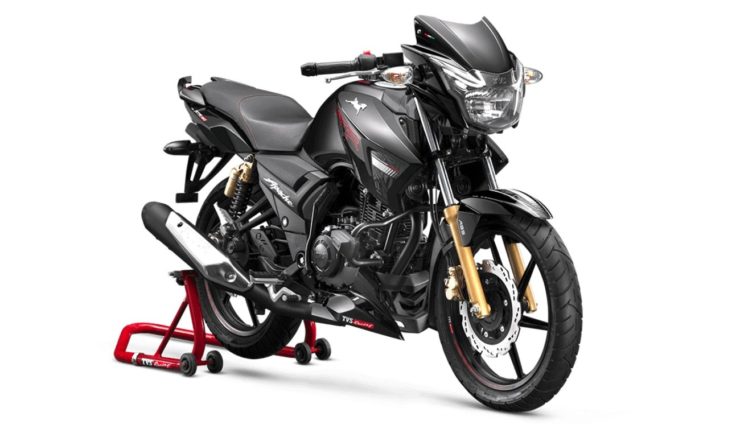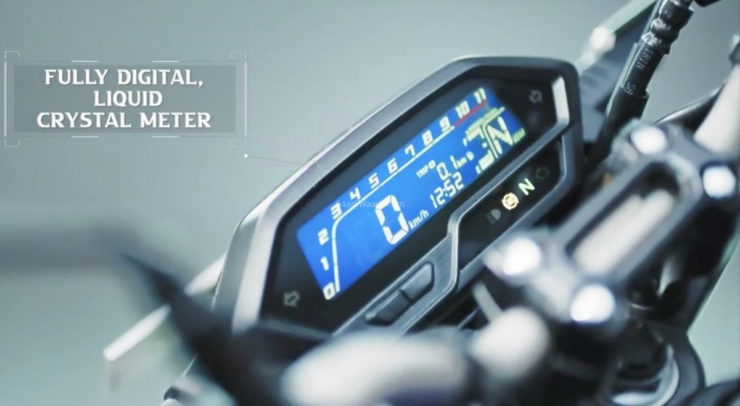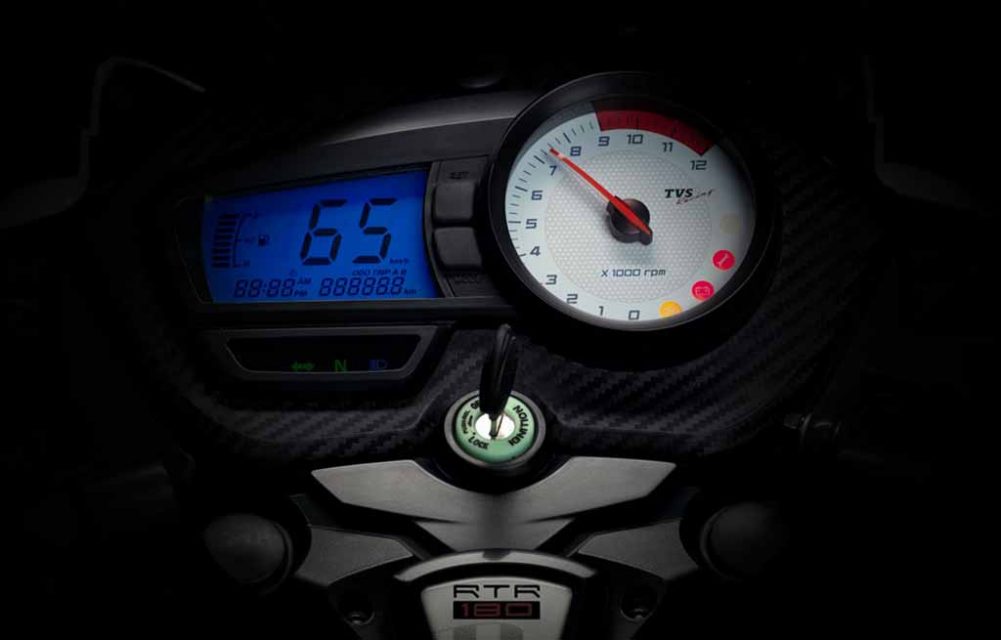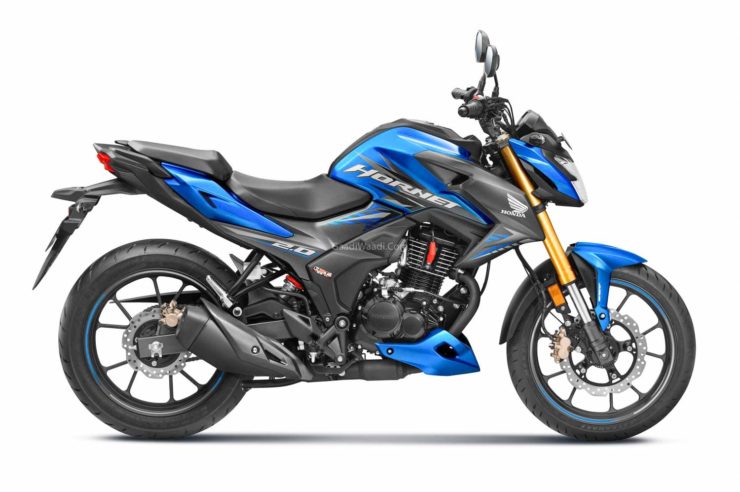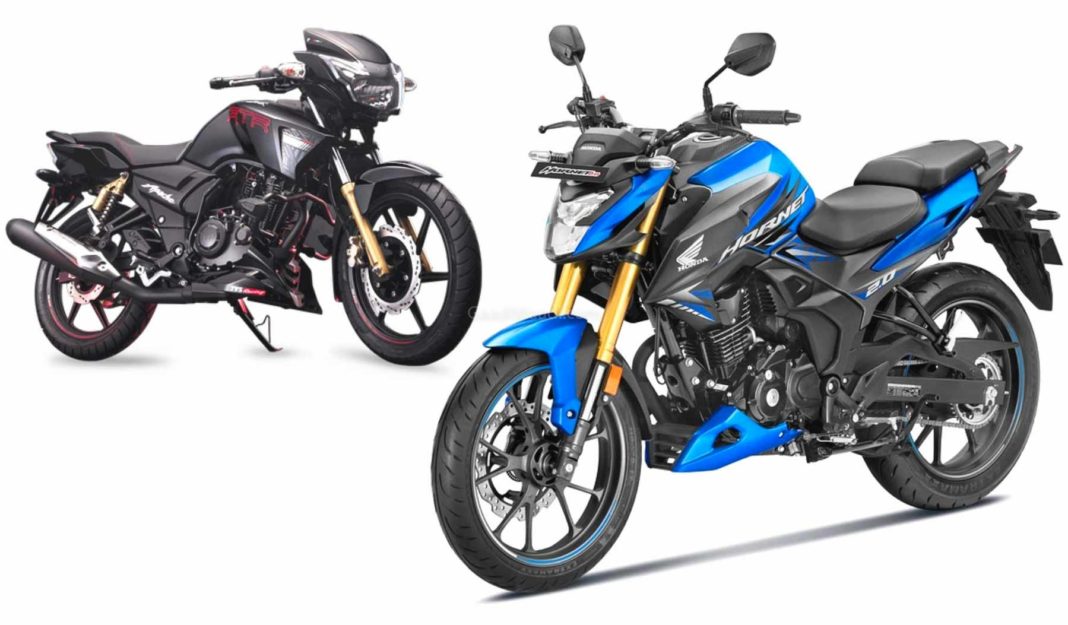
Check out our on-paper comparison of the Honda Hornet 2.0 and TVS Apache RTR180, in terms of design, features, specifications, and price
Honda has recently launched a new sub-200cc motorcycle for the Indian market, the Hornet 2.0. The motorcycle offers a bigger engine and better mechanicals than the now-discontinued Hornet 160R (or Hornet 1.0, in retrospect). Rather than being an all-out performance bike, this one is a sporty commuter motorcycle, just like its predecessor.
The closest competitors to the Honda Hornet 2.0 are the Bajaj Pulsar 180 and Apache RTR 180. Here, we shall compare the Hornet 2.0 with the latter, in terms of design, equipment, performance, and price, to determine which among the two is the better proposition.
Styling
The Honda Hornet 2.0 draws a lot of inspiration from the CB Hornet 160R. The LED headlamp sports an aggressive design, and the rear gets an equally aggressive X-shaped brakelight. The gold-painted USD front forks add muscle to the motorcycle, aided by the sporty-looking tank extensions. The new Hornet also gets a split-seat design, along with split grabrail for the pillion.
The Apache RTR 180 has a much more aggressive look than the Honda. The headlamp design is inspired by an apex predator, and the motorcycle looks and feels much sleeker than its competitors. The front forks look quite slim, and the tank shrouds also look less muscular. The seat has a single-piece design, with a split pillion grabrail and LED brakelights at the tail-end. That said, the Apache still commands a lot of road presence, and even after nearly seven years, doesn’t look dated.
Hornet 2.0 vs TVS Apache RTR180 Features:
Honda has given the Hornet 2.0 a fully-digital instrument cluster, along with upside-down front forks and monoshock rear suspension. The motorcycle sports LED lights all-around, including the headlights, taillights, and even the turn-indicators. The handlebar is a conventional single-piece unit, and along with the engine kill switch you also get hazards switch.
The Apache RTR180’s age is immediately apparent when your eyes fall on its semi-digital instrument console. Here, you get an analogue tachometer and a digital speedometer (with digital trip meter and odometer as well). TVS also offers conventional front forks and twin shock absorbers at the rear. Overall, the TVS falls behind the Honda in the equipment department.
Both these motorcycles offer tubeless tyres as standard, along with petal disc brakes at both the wheels and single-channel ABS.
Hornet 2.0 vs TVS Apache RTR180 Engine and Performance:
The Hornet 2.0 is powered by a new 184.4cc, air-cooled, single-cylinder engine, which generates a peak power and torque output of 17.26 PS and 16.1 Nm. This motor comes mated to a 5-speed gearbox. The kerb weight of the Honda is 142 kg, which isn’t too much for a motorcycle this size.
The Apache 180’s mill is a 177.4cc, air-cooled, single-cylinder unit with oil-cooling. This powerplant can generate a maximum power of 16.79 PS and a peak torque of 15.5 Nm, and is paired with a 5-speed gearbox. Although the power output is lower than that of the Honda, the Apache also has a slightly lower kerb weight, at 141 kg. The power-to-weight ratio, however, is better on the Hornet. If you’re willing to make that trade though, you’ll find that the Apache has extremely agile handling.
Hornet 2.0 vs TVS Apache RTR180 Price:
Honda has given the Hornet 2.0 at an attractive price tag of 1.26 lakh, which is significantly lower than the current crop of 200cc motorcycles, and only slightly more expensive than the 160cc segment bikes. Considering its handsome design and impressive features, the Hornet 2.0 surely seems like a great place to put your money.
The Apache RTR 180, on the other hand, is even more affordable, priced at just 1.05 lakh. At this price point, the RTR 180 is more of a competitor to the RTR 160 4V! In terms of sheer affordability, the Apache has the Hornet beat. Of course, you’d have to live with the outdated instrument cluster and slightly lower performance.
(All prices mentioned are ex-showroom, New Delhi)
Verdict
Simply put, the Honda Hornet 2.0 is the better motorcycle of the two. It offers better equipment, has a fresher design, and offers more power. Also, the riding position on the Honda is quite upright, which is ideal for city commuting.
The TVS Apache RTR180 makes sense for people looking for better performance than a 160cc motorcycle, but at the same price point. Its clip-on handlebars give it a very aggressive, leaned-forward riding posture, which is quite tiring in city traffic. Unless you have a budget constraint, the Honda is the better pick of the two.


